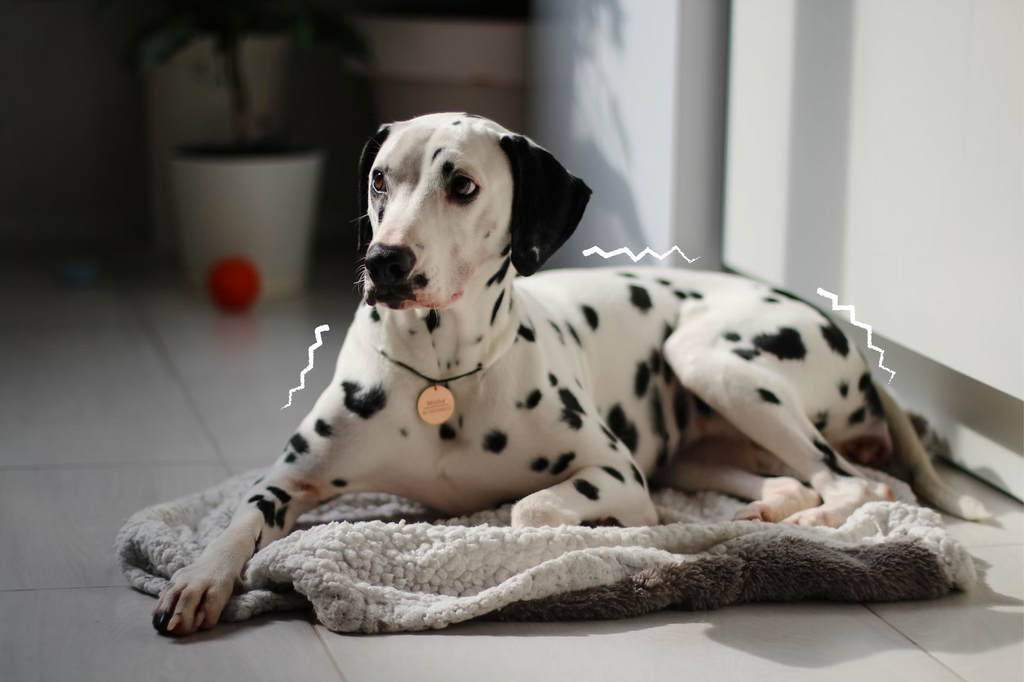Choosing the Right Tick and Flea Preventative for Your Dog

When it comes to keeping your dog safe and healthy, choosing the right flea and tick preventative is essential. These parasites can cause a variety of health problems for your dog, from skin irritations to even potentially become life threatening.
Tick paralysis is a leading preventable cause of death in dogs and cats along the east coast of Australia. Around 10,000 dogs are affected annually, with a mortality rate of about 5%, even when they receive the best possible care.
With so many products on the market, it can be overwhelming to decide which one is best for your furry friend. Here’s a guide to help you choose the right tick and flea preventative for your dog, based on their lifestyle, health, and your preferences.
1. Consider Your Dog's Lifestyle
One of the first things to consider when choosing a tick and flea preventative is your dog’s lifestyle. If your dog is an outdoor adventurer, spends time in dog parks, or lives in a rural area, they are more likely to be exposed to fleas, ticks, and other parasites. In contrast, if your dog is mainly an indoor pet, their exposure may be limited, and a less frequent treatment might be appropriate - however, there is always a risk no matter where your dog resides!
For dogs in high-risk areas, such as those living in regions with a heavy tick population, a preventative that offers longer-lasting protection, such as Bravecto, which provides up to 12 weeks of coverage, may be ideal.

2. Age and Health Considerations
Different medications are suited to different ages and health conditions. It’s important to choose a product that is safe for your dog’s age, as puppies and senior dogs may have specific needs. Many flea and tick treatments are safe for puppies as young as 8 weeks old, but always check the label to confirm.
Health is another key factor. If your dog has any underlying conditions, such as allergies, heart disease, or a compromised immune system, certain treatments may not be appropriate.
Always consult your veterinarian to make sure the preventative is safe for your dog, especially if they are pregnant, lactating, or have pre-existing health conditions.
** The below is a guide only - always check the label or with your veterinarian before administering any of the medication below to your pet!
Bravecto (Chewable Tablet)
- Age: Can be used for dogs from 8 weeks of age.
- Duration: Provides up to 12 weeks of protection against fleas and ticks.
NexGard (Chewable Tablet)
- Age: Safe for dogs from 8 weeks of age.
- Duration: Provides monthly protection against fleas and ticks.
NexGard Spectra (Chewable Tablet)
- Age: Suitable for dogs from 8 weeks of age and weighing at least 2kg.
- Duration: Provides monthly protection against fleas, ticks, and intestinal worms.
Frontline Plus (Topical Treatment)
- Age: Approved for puppies from 8 weeks of age.
- Duration: Provides monthly protection against fleas and ticks.
Advantix (Topical Treatment)
- Age: Safe for dogs from 7 weeks of age.
- Duration: Provides monthly protection against fleas, ticks, and mosquitoes.
Seresto (Collar)
- Age: Can be used for puppies from 7 weeks of age.
- Duration: Provides up to 8 months of continuous protection against fleas and ticks.
Capstar (Oral Tablet)
- Age: Safe for puppies from 4 weeks of age and weighing at least 1kg.
- Duration: Provides 24 hours of protection against fleas.
Flevox (Topical Treatment)
- Age: Suitable for puppies from 8 weeks of age.
- Duration: Provides monthly protection against fleas and ticks.

3. Different Types of Preventatives
There are several types of flea and tick preventatives, and each has its own benefits and drawbacks. Here’s a breakdown of the most common options:
- Oral Medications (Pills and Chews): Oral flea and tick preventatives, like Bravecto and NexGard, are easy to administer and are often preferred by pet owners who don’t want to deal with the mess of topical treatments. They are highly effective and provide long-lasting protection (Bravecto lasts up to 12 weeks). However, they may require regular dosing (monthly or every 12 weeks), and some dogs may have an adverse reaction to the ingredients, so always monitor your dog after administering any medication.
- Topical Treatments (Spot-ons): These are applied directly to your dog’s skin, usually at the back of the neck. Popular brands like Advantix and Frontline offer fast-acting solutions for flea and tick prevention. They are effective and typically last for a month, but some dogs may experience skin irritation, and they can be messy to apply. Also, they need to be reapplied regularly - especially if your dog regularly swims, which might not be as convenient for some pet owners.
- Collars: Flea and tick collars like Seresto are another option. They provide continuous protection, often lasting several months. Collars are convenient, but they may not be suitable for all dogs, especially those with sensitive skin. They can also become less effective if they get wet frequently.
- Shampoos, Powders, and Sprays: While shampoos, powders, and sprays can provide immediate relief, they are generally not recommended as long-term solutions because they often provide only short-term protection. These treatments can be useful for quick fixes but may not offer the consistent and long-lasting protection your dog needs.
4. Location and Climate
Your dog’s environment plays a big role in determining the type of protection they need. In Australia’s diverse climate, certain areas present specific challenges for pet parents, especially when it comes to ticks and fleas.
If you live in a paralysis tick-prone region, such as the eastern coastline of Australia from North Queensland down to Victoria, your dog faces a higher risk of exposure to one of the most dangerous parasites for pets. Paralysis ticks can cause life-threatening reactions, making robust tick prevention absolutely essential for dogs in these areas. Regular tick checks, in combination with preventative medications, are key to keeping your dog safe.
In hot and humid climates, such as northern Australia, fleas thrive year-round. Dogs in these regions are more likely to pick up fleas from their surroundings, which can lead to itching, allergies, and other complications. Flea preventatives are particularly important in these conditions to ensure your dog stays comfortable and pest-free.
For dogs in urban environments, protection against fleas picked up in parks, doggy daycares, or communal spaces is vital. Even if your dog spends most of their time indoors, they can still encounter fleas or ticks on walks or from other pets.
Meanwhile, outdoor adventurers that love hiking, camping, or exploring the bush are at a higher risk of encountering ticks in rural or wooded areas. These pups benefit from comprehensive tick prevention measures and regular post-adventure checks.
In contrast, flea infestations are a problem that can occur in nearly any environment, especially in warmer months. In cities or warmer climates, where fleas are more common, a monthly preventative like NexGard may be sufficient.

5. Safety and Effectiveness
Not all flea and tick treatments are created equal. Always read the product labels carefully to ensure the treatment is effective against the types of parasites prevalent in your area, such as ticks, fleas, and worms. Some preventatives, like NexGard Spectra, protect against a broad range of parasites, including intestinal worms, in addition to fleas and ticks, which might be a good option if your dog is at risk for other parasites.
It’s also crucial to ensure that the treatment you choose is safe for your dog. Some products are not suitable for puppies, pregnant or nursing dogs, or dogs with certain health conditions.
When in doubt, consult with your veterinarian to determine the safest and most effective option for your dog.






